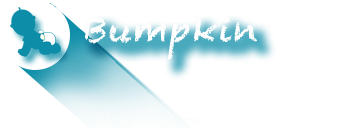Last year, the U.S. Department of Education’s National Center for Education Statistics released that there are 1,770,000 homeschooled students in the US. This is a huge jump from 1.5 million students in 2007. Now, 1.7 million may not sound much since it represents just 3.4% of children of school age, but the fact still remains that the number is on the rise since it was first tracked in 1999 when there were only 850,000 homeschooled students.
Right now, there are two options when it comes to schooling – institutions and homeschooling. Of course, most parents prefer the traditional form of sending them off to public or private institutions. Only a little more than 3% of parents homeschool, a statistic so lopsided as to stigmatize those parents who do decide to teach kids themselves.
It’s easy to see why this is the case. After all, most parents were traditionally schooled, so the idea of something that doesn’t always seem viable. I admit that I didn’t want to be homeschooled because I didn’t want people to think that I was weird – only religious nuts and actors were home-schooled. There’s many an article that argue that most homeschooled kids ended up weird.
 But homeschooling is on the rise. There are social media homeschooling websites where families have a dedicated community. When I started digging into the reasons why parents homeschool, the first thing I found was that private pre-schools are run as commercial institutions meant to maximize profits. It’s like every move your kid makes there’s an attached fee structure that provides the school with the opportunity to increase tuition. Sure, I know that they have to pay the bills, but so do I. By homeschooling my kids, I can save a lot of money. For starters, I’m going to save on $4,460 to $13,158 per year, the average cost for preschools in the US.
But homeschooling is on the rise. There are social media homeschooling websites where families have a dedicated community. When I started digging into the reasons why parents homeschool, the first thing I found was that private pre-schools are run as commercial institutions meant to maximize profits. It’s like every move your kid makes there’s an attached fee structure that provides the school with the opportunity to increase tuition. Sure, I know that they have to pay the bills, but so do I. By homeschooling my kids, I can save a lot of money. For starters, I’m going to save on $4,460 to $13,158 per year, the average cost for preschools in the US.
You’re probably thinking … what the heck do I know about educating kids? Well, I’m keenly aware of the work that lay ahead of me. There are homeschooling programs to follow, some for a fee, which teach parents the methodology and provide the lessons for children. Many of these homeschooling programs are actively promoting themselves as ways to teach children to learn, not teach children to take tests. Many of today’s academics are betraying their own roots by suggesting their schools are Teaching to the Test. For many parents who were once teachers in these schools, they are having to “unlearn” the traditional way of schooling in order to properly homeschool their kids.
By taking away testing incentives, parents are finding there’s a larger portion of time devoted to learning. Also, my wife and I believe that our kids can learn better because they can learn at their own pace. Think back when you were still studying and you couldn’t understand the lesson but the rest of the class already got it. You couldn’t slow down the rest of the class for fear of embarrassment so you had no choice but to act as if you got it. On the other hand, if you already got it but most of the class hasn’t yet, you have no choice but to wait. This is because you’re at the mercy of the pace of the class. Public schools recognize the Pacing Quandary is causing problems in schools, but have little recourse given the large sizes of classes.
This is where homeschooling shines and the homeschool stigma fades. As soon as a kid gets it, we’re moving on to the next subject. If he hasn’t gotten it yet, then we’re staying on that topic no matter how long it takes. No one’s waiting.
 Other benefits include flexibility, increased family bonds, more time with your children, more creativity with on-site lesson plans and the freedom to respond to your child’s personality on any given day, constructing a lesson plan to meet their capacity. We’re keenly aware of the 10 signs of an overscheduled child, and the problem with competition ruining children’s desire to learn.
Other benefits include flexibility, increased family bonds, more time with your children, more creativity with on-site lesson plans and the freedom to respond to your child’s personality on any given day, constructing a lesson plan to meet their capacity. We’re keenly aware of the 10 signs of an overscheduled child, and the problem with competition ruining children’s desire to learn.
Homeschooling is still very active in Hollywood, but also becoming more common to parents who recognize the benefits of doing so. It may not displace traditional schooling as the preferred schooling option in the next decade, but its growth will be steady and the homeschool stigma will all but disappear.


